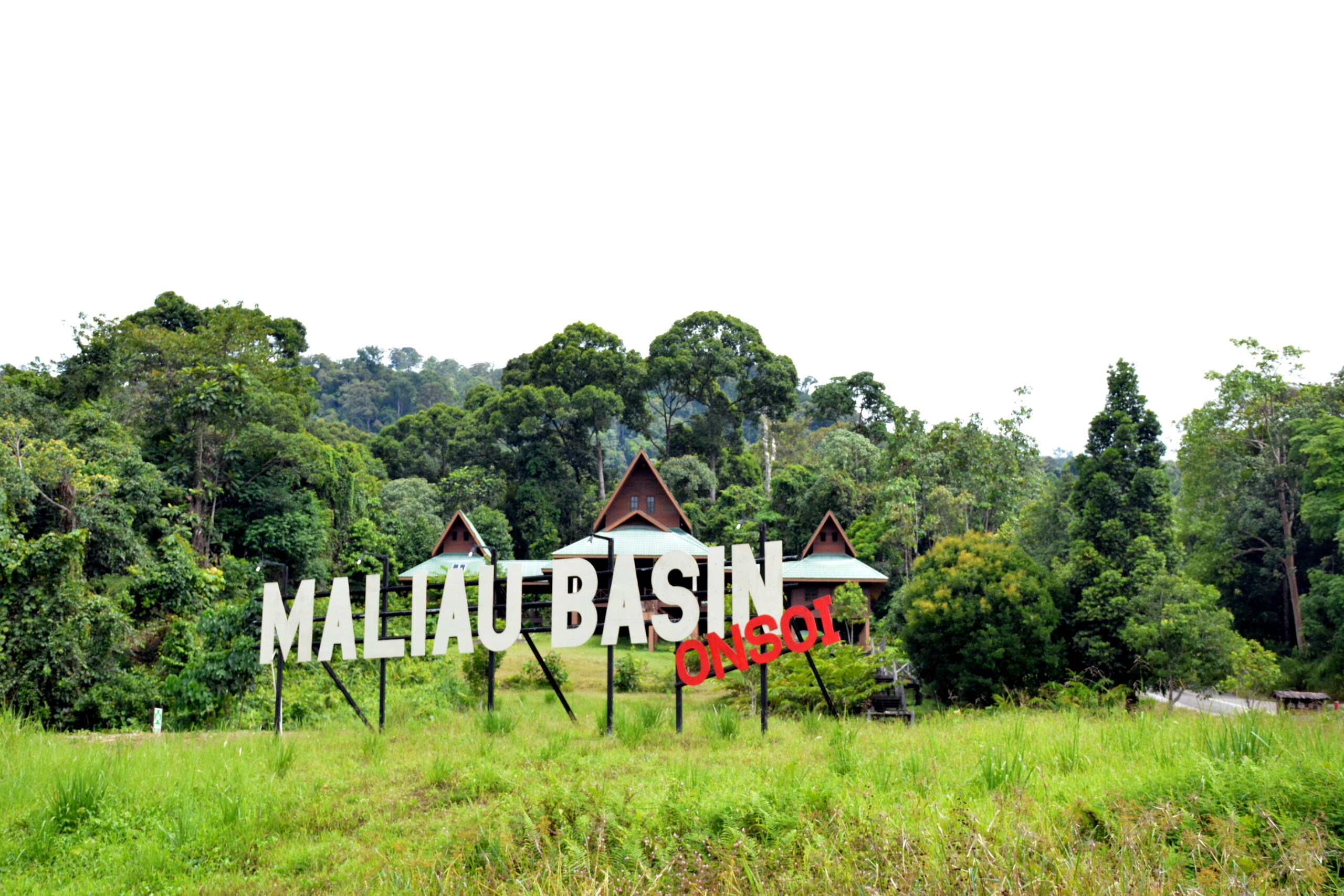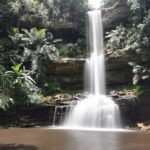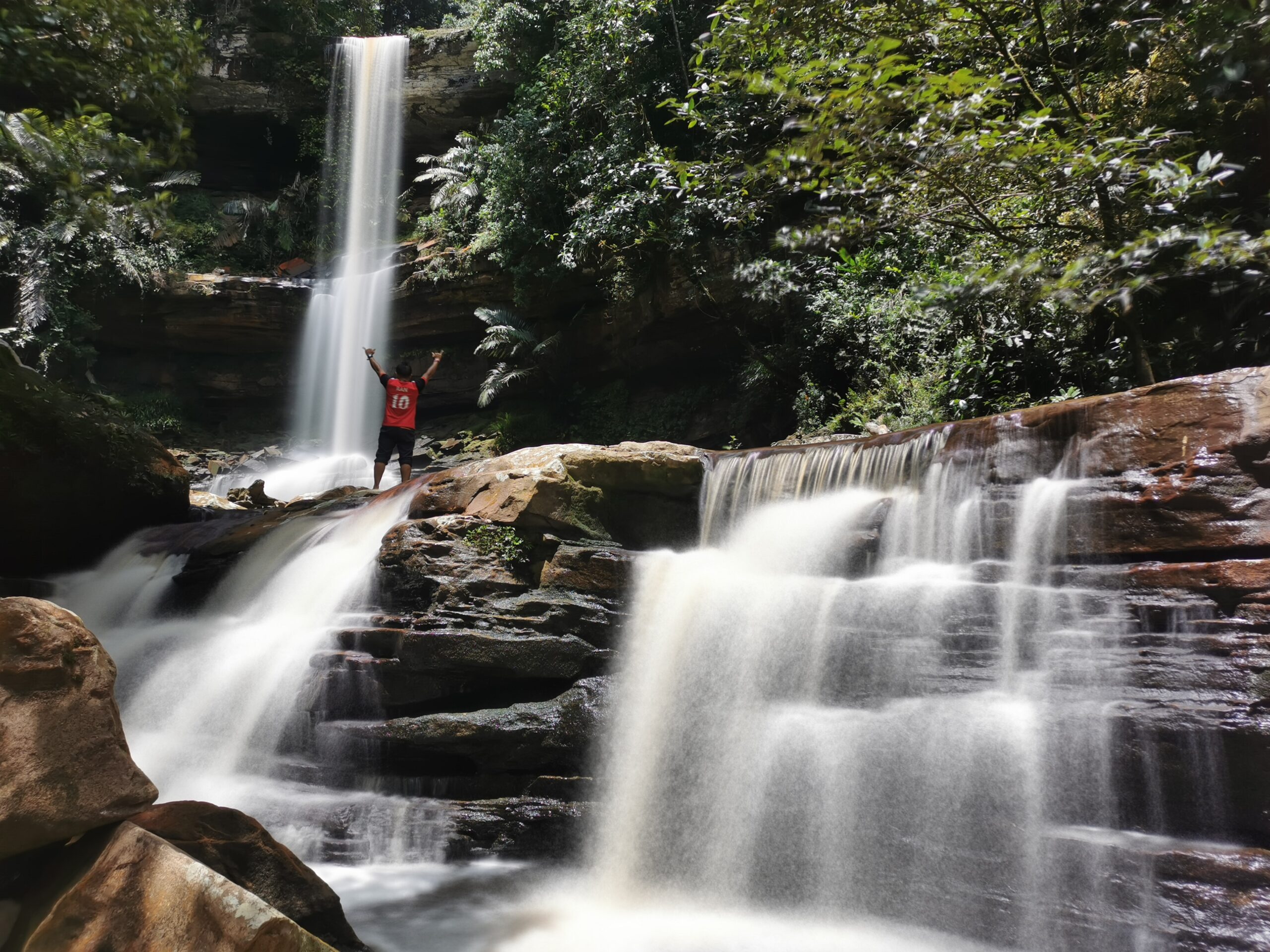Geographical Features
The 588.4 km² (58,840 hectares) Maliau Basin Conservation Area encompasses the whole of Maliau Basin itself (390 km²), plus an additional 198.4 km² of forested land to the east and north of the rim, including the fabled Lake Linumunsut, formed by a landslide blocking a small tributary of the Pinangah River.
While this entire region is rugged, the saucer-shaped Maliau Basin is distinguished by its almost circular perimeter, sharply delimited on all sides by cliffs or very steep slopes, making it insurmountable on foot from most directions. The highest point is on the north rim, at over 1,675 m in elevation, but has yet to be accurately surveyed. Resembling a volcanic caldera, the 25 km diameter Basin is in fact a sedimentary formation comprised mainly of gently inclined beds of sandstone and mudstone. The Basin represents a single catchment, and is drained by a set of radiating tributaries of the Maliau River, one of which descends a magnificent series of waterfalls, known as Maliau Falls. Numerous smaller waterfalls have also been discovered throughout the Basin. The Maliau River then drains through a gorge out of the southeast of the Basin into the Kuamut River, which in turn feeds into the Kinabatangan, the longest river in Sabah.

Maliau Basin Studies Centre (DVSC)
Due to its unique geomorphology, Maliau Basin contains many outstanding natural features, including probably the highest number of waterfalls per unit area in Malaysia.



